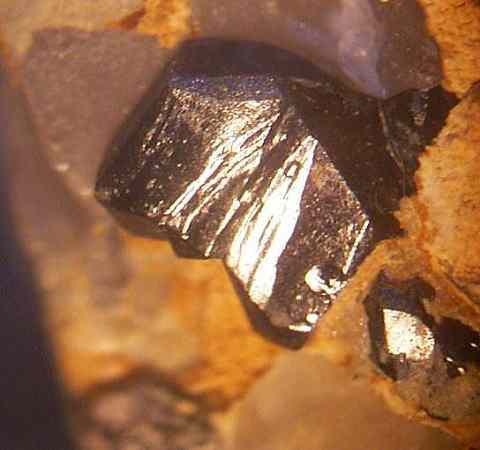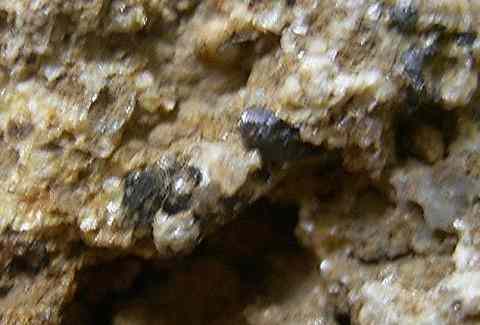Cassiterite
Suzugouya, Shirosato city, Higashi-ibaraki county, Ibaraki pref., Japan
Source for Tin

Field of view: 5 mm. A contact twin of cassiterite. The black crystal is cassiterite. The white basement is quartz encrusted with limonite. The white host is gangue quartz.
Recovered from an open space of a quartz vein of a pneumatolytic deposit formed by S-type (Ilmenite-series) granite. Formed in the early Paleocene (65 Ma).
Cassiterite from this location was described in 1889.

Field of view: 30 mm. Cassiterite associated with muscovite. The black grains are cassiterite. The micaceous silver-white parts are muscovite, and the translucent gray parts are quartz. Muscovite forms a reniform group in open spaces of quartz. Cassiterite is surrounded by muscovite.
Other localities
- Takatori Mine (Pneumatolytic, Twin)
- Taisho Mine (Pneumatolytic, Semitransparent)
- Mount Gyojya (Pneumatolytic, Prismatic)